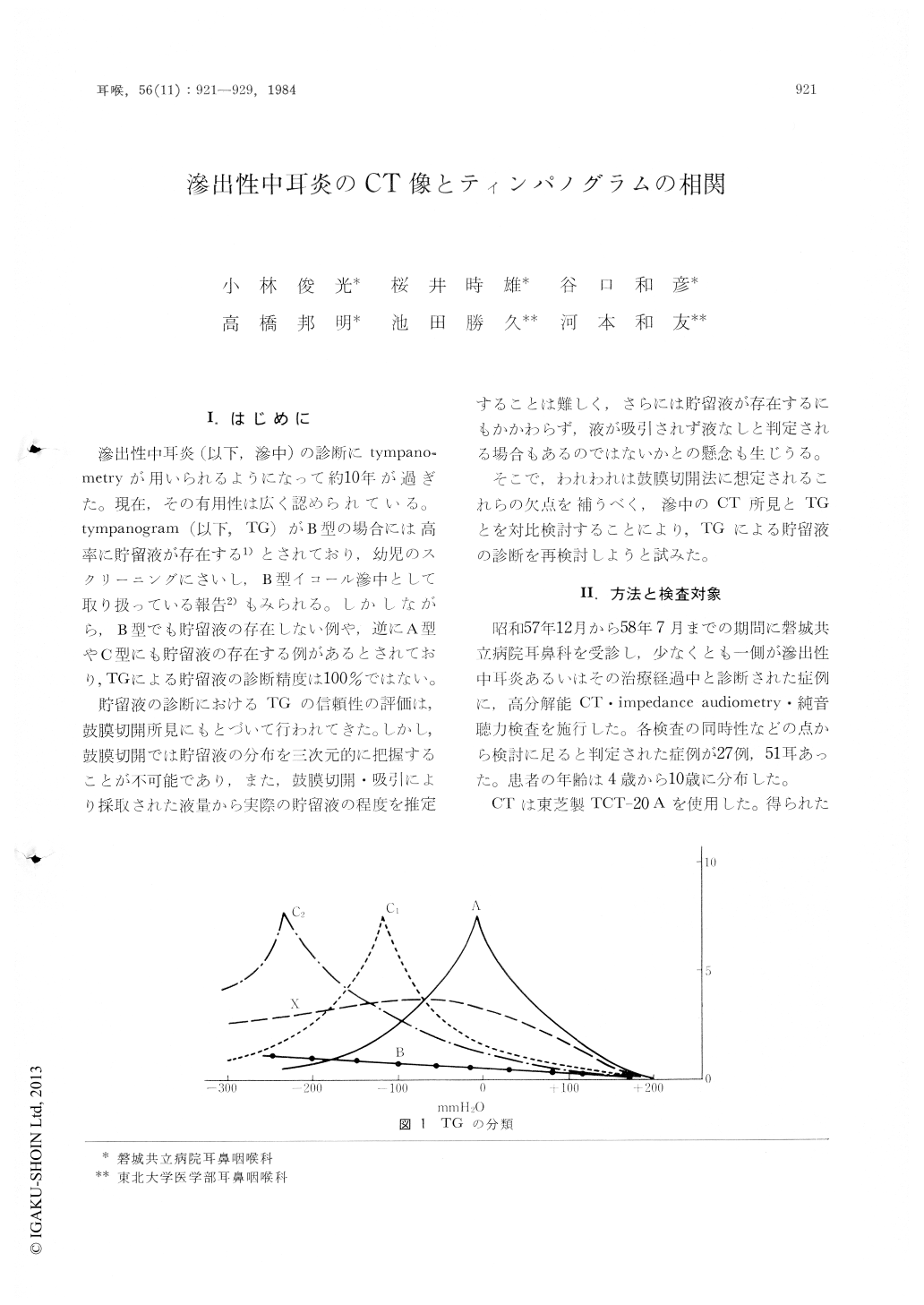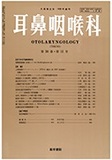Japanese
English
- 有料閲覧
- Abstract 文献概要
- 1ページ目 Look Inside
I.はじめに
滲出性中耳炎(以下,滲中)の診断にtympanometryが用いられるようになって約10年が過ぎた。現在,その有用性は広く認められている。tympanogram(以下,TG)がB型の場合には高率に貯留液が存在する1)とされており,幼児のスクリーニングにさいし,B型イコール滲中として取り扱っている報告2)もみられる。しかしながら,B型でも貯留液の存在しない例や,逆にA型やC型にも貯留液の存在する例があるとされており,TGによる貯留液の診断精度は100%ではない。
貯留液の診断におけるTGの信頼性の評価は,鼓膜切開所見にもとづいて行われてきた。しかし,鼓膜切開では貯留液の分布を三次元的に把握することが不可能であり,また,鼓膜切開・吸引により採取された液量から実際の貯留液の程度を推定することば難しく,さらには貯留液が存在するにもかかわらず,液が吸引されず液なしと判定される場合もあるのではないかとの懸念も生じうる。
In an attempt to evaluate the feasibility of the tympanometry in detecting the middle ear effusion (MEE) in secretory otitis media (SOM) in childhood, the findings of the computed tomography (CT) were evaluated whether they were compatible with that of tympanometry in 27 cases (51 ears) of SOM.
Tympanometry (tympanogram, static compliance measurement and stapedial reflex test), pure tone audiometry and high resolution CT were performed sequentially, and the CT findings were compared with the results of the other tests.
The conclusions obtained were summarized as follows.
1. Among the tests performed, tympanogram appeared to be the most reliable measure in detection of MEE.
2. Fifteen ears out of 16 with type B tympanograms and 6 ears out of 15 with type C2 tympanograms, were diagnosed by CT as having MEE. MEE occupied the entire middile ear space in most ears with type B tympanograms. By contrast, in the ears with type C2 tympanograms, air containing space of varying size were always observed even in the ears with MEE.

Copyright © 1984, Igaku-Shoin Ltd. All rights reserved.


